

William Stopford
The cars axed in 2025 that we'll miss the most
18 Hours Ago
The Hyundai Tucson N Line package straddles the line between sportiness and luxury. And, it'll be available across the whole Tucson range.



Founder
New from
$29,640
excl. on-roads

Founder
New from
$29,640
excl. on-roads


Founder
New from
$29,640
excl. on-roads

Founder
New from
$29,640
excl. on-roads
Quickly see how this car stacks up against its competition. Select any benchmark to see more details.
Where expert car reviews meet expert car buying – CarExpert gives you trusted advice, personalised service and real savings on your next new car.
The Hyundai Tucson is one of the brand’s best-selling models in Australia.
It’s no surprise, then, a lot of effort has gone into making the 2021 Hyundai Tucson a more appealing proposition for buyers.
The Tucson competes in the most popular vehicle segment in Australia, mid-sized SUVs, which means buyers are hunting for value, style, and practicality.
Sitting on a new platform, the all-new model brings with it three model grades, three engines, and the addition of an N Line package for each model grade.
We had the chance to sample the all-new 2021 Hyundai Tucson Highlander with N Line package at a private facility ahead of its local launch.
It was an engineering evaluation vehicle, which meant we weren’t able to drive it on the public road. Our drive impressions were limited to our time on the private road.
There are also some features and specifications that haven’t been confirmed yet, but we’ve listed everything we know at this stage.

The 2021 Hyundai Tucson range is split into three variants: the Tucson, Tucson Elite and Tucson Highlander.
The N Line package can then be added to any of the three variants.
You can read a detailed breakdown of each Tucson variant here. Pricing is yet to be confirmed, but we expect the Tucson to increase in price given the increase in standard equipment and features.
In top specification trim as tested here, the Highlander comes with 19-inch alloy wheels, LED headlights and tail lights, LED daytime running lights, privacy glass, a panoramic glass roof, heated and cooled front seats, heated second-row seats, a heated steering wheel, 360-degree cameras, configurable LED interior lighting, powered front seats, a power tailgate, and a full suite of active safety tech.
The N Line package adds 19-inch N Line alloy wheels, an N Line exterior body kit, LED headlights and tail lights (where they aren’t already fitted as standard), a gloss black grille, silver skid plates, N Line badges, leather and suede interior trim, an N Line steering wheel, and a 10.25-inch digital instrument cluster (where it’s not fitted as standard).
The 2021 Hyundai Tucson will be available with eight colours. Four of the eight are unique to vehicles with the N Line package.
N Line buyers can pick from white, black, red and grey.

The all-new Hyundai Tucson hasn’t been crash tested in Australia or internationally yet.
But the vehicle does come with a generous list of standard safety inclusions. For reference, the previous model scored a five-star safety rating.
Standard safety equipment includes low- and high-speed autonomous emergency braking (AEB), reverse AEB, rear cross traffic alert, blind spot monitoring, lane keeping assistant, lane departure warning, full suite of airbags (including a centre airbag), driver attention monitoring, and radar cruise control.
There’s also a full set of airbags throughout the cabin, including a front-centre inflator which is now a requirement to achieve a five-star rating in 2021.
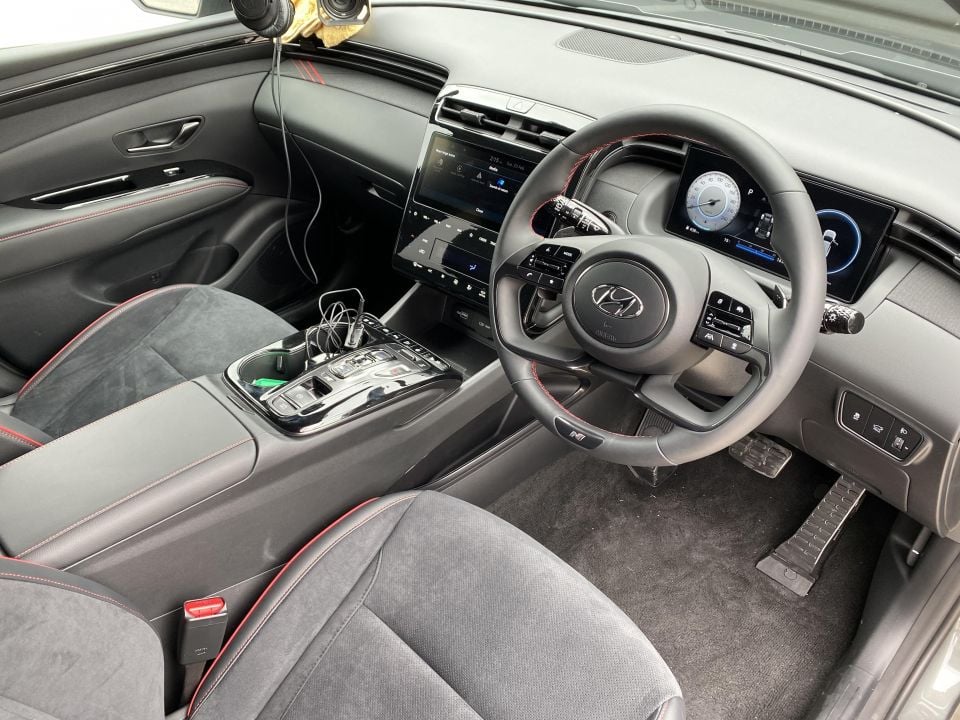
When I first saw pictures of the new Hyundai Tucson, I wasn’t entirely sold on the design. In person the exterior really pops and when specified in the right colour, it looks sensational in person.
While the exterior may divide opinion, the interior looks like a huge departure from the previous generation. Where the old Tucson’s cabin was starting to feel quite dated, the new Tucson feels like a completely different vehicle.
The materials used throughout the cabin feel high-end and premium, while the twin-10.25-inch displays elevate the Tucson above most other mid-sized SUVs. Cheap and cheerful isn’t the name of the game here, and it certainly shows with the interior.
Downsides? It looks impressive from a distance, but on closer inspection you’ll spot extensive use of piano black. It marks easily, scratches even more easily, and shows dust all too often. Some love it but it would have been nice to see some other material options.
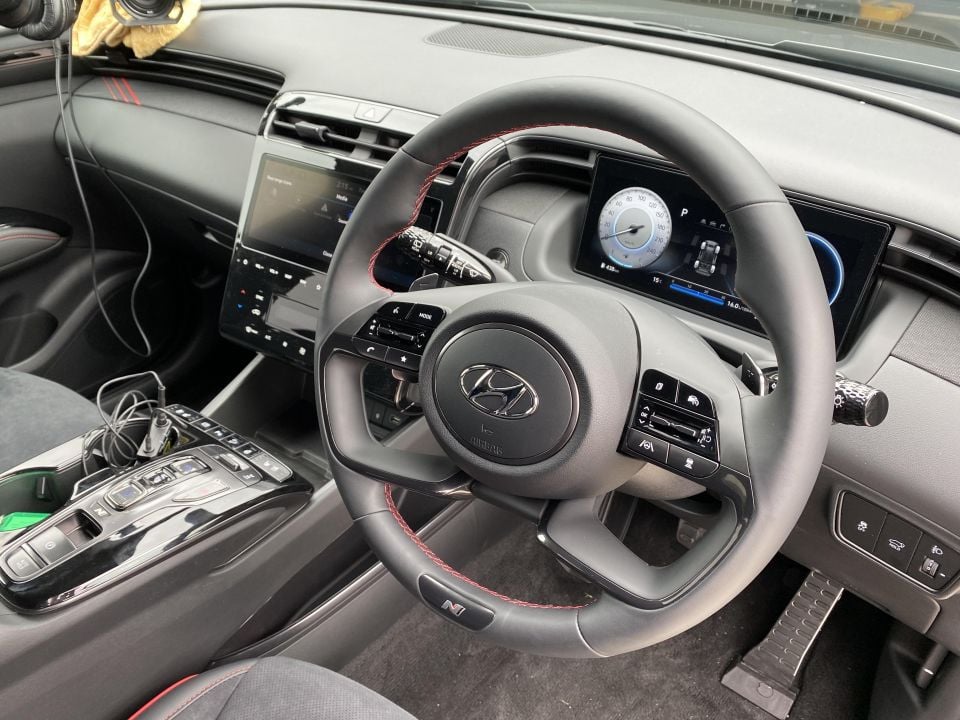
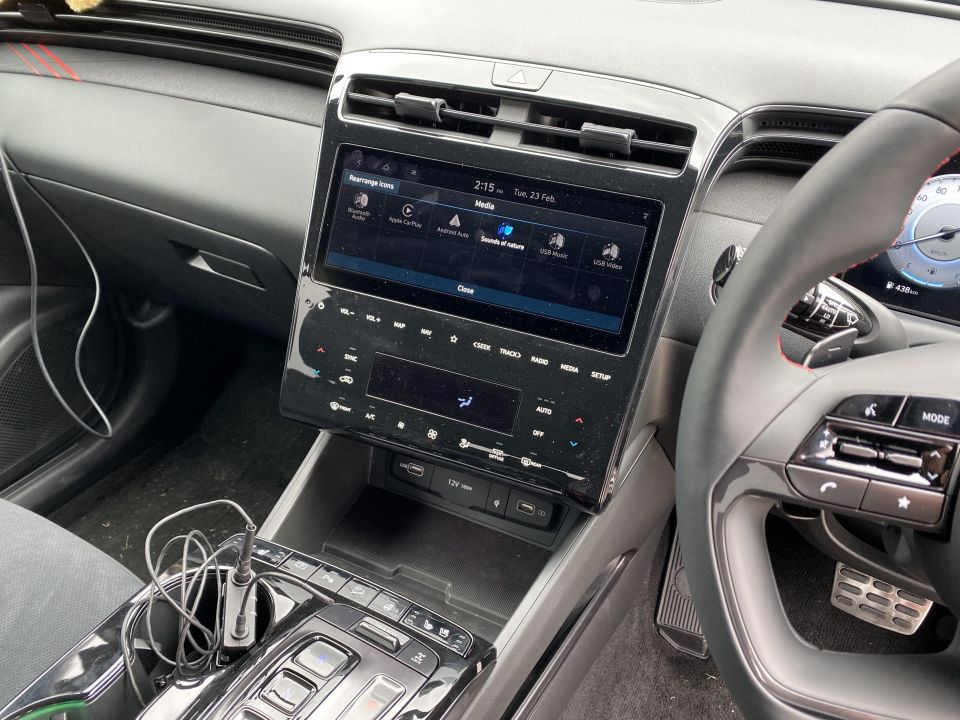
A traditional gear lever has been swapped out for a shift-by-wire system on higher grades. Ahead of the gear selector are controls for the heated/cooled seats, heated steering wheel and parking functions.
The 10.25-inch infotainment system is easy to use and has similar functionality to the newer Hyundai/Kia range. That means inclusions like Sounds of Nature for soothing background noise, Quiet Mode for silence through the rear speakers, and selectable driver profiles.
Smartphone mirroring comes in the form of wired Apple CarPlay and Android Auto. Apple CarPlay takes up the entire screen and is very classy. Smartphone mirroring is also what you need to use the car’s voice recognition system – pressing the voice button without a smartphone paired doesn’t do anything.
Ahead of the driver is another 10.25-inch screen Hyundai calls the Supervision Cluster. It’s a high-resolution screen that displays the speedometer, tachometer and critical vehicle functions. It also changes colours and design depending on the drive mode chosen using the rocker switch ahead of the gear selector.
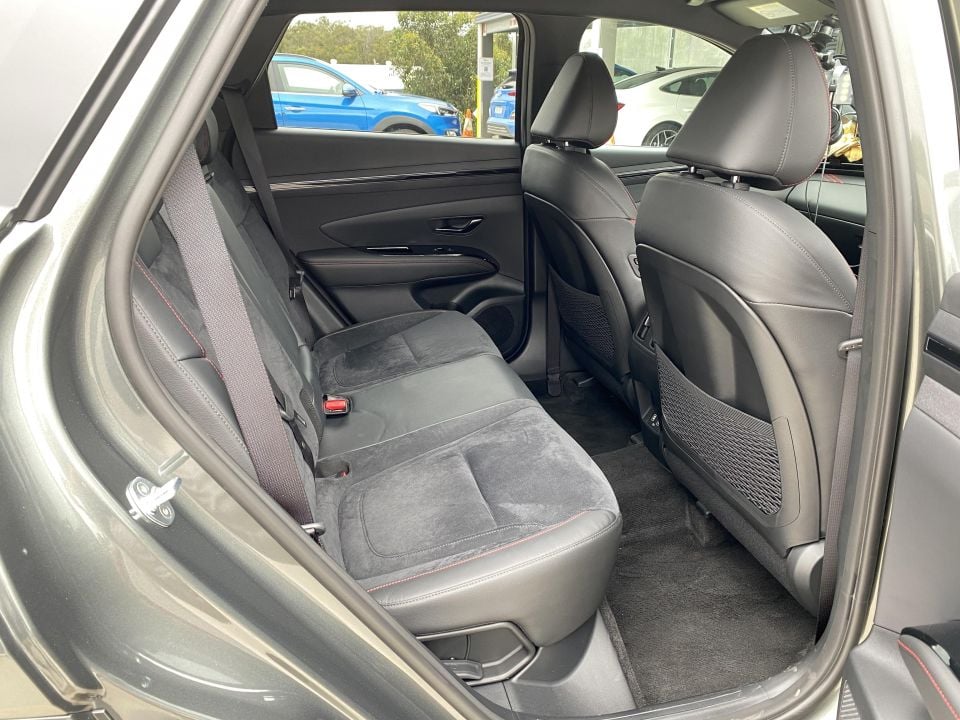
You’ll notice the centre stack doesn’t contain any physical buttons. Outside of the infotainment screen, all controls are capacitive touch. Our limited time with the car found the controls to be easy to use, but the lack of physical buttons and switches are likely to make some people grumble.
The seats are comfortable, and when coupled with the N Line package feature suede down the centre with red stitching. The front seats include perforations for cooling to prevent needing to peel yourself off the seats on a hot day. Both the driver and front passenger seats are electric, with memory for the driver’s seat.
Unlike European versions of the Tucson, the Australian-market Tucson sits on a longer wheelbase. It measures 4630mm long, 1865mm wide, 1665mm tall and sits on a 2755mm wheelbase. That makes it 15mm longer overall than the Toyota RAV4, with a wheelbase that’s a 65mm longer.
That means when you sit in the back there’s a surprising amount of room. Even with the first row pushed all the way back there’s a heap of room for an adult. There’s adequate toe room and more than enough headroom (I’m 185cm tall).
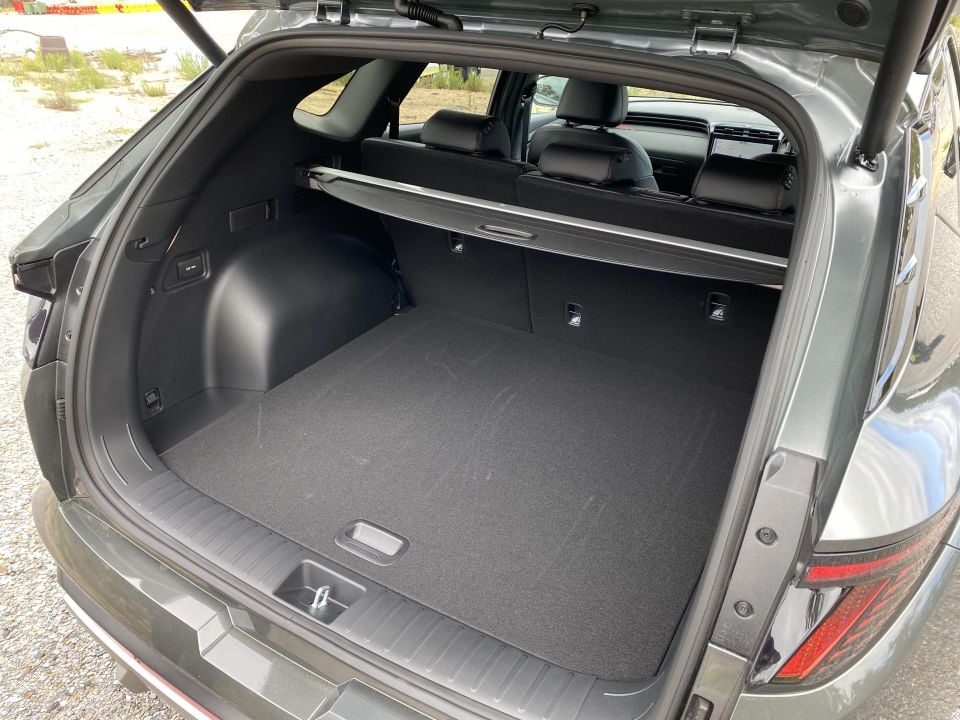
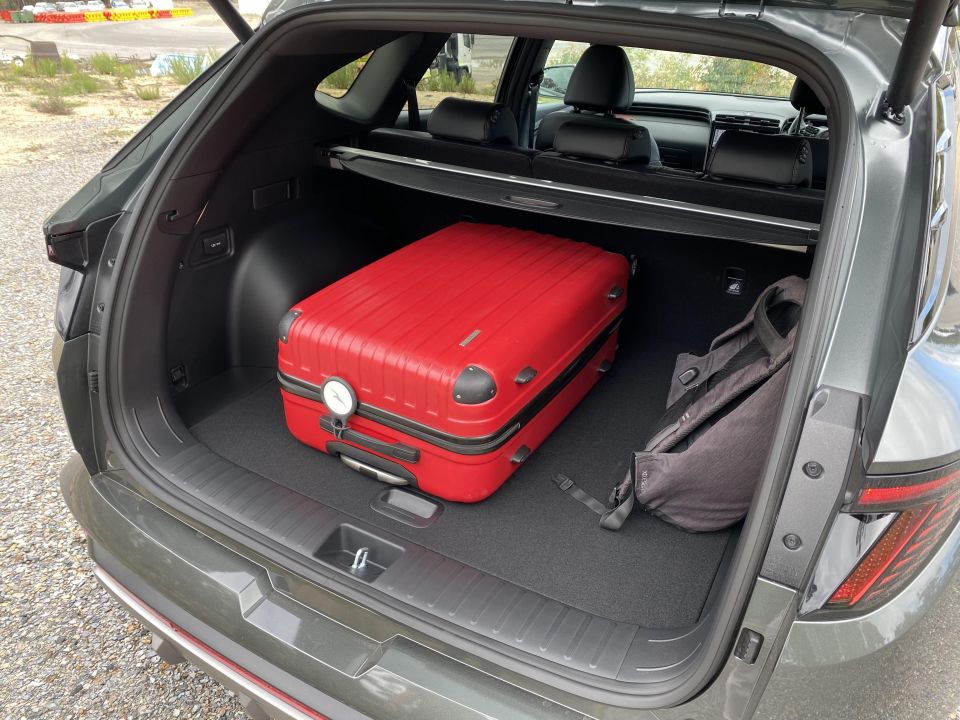

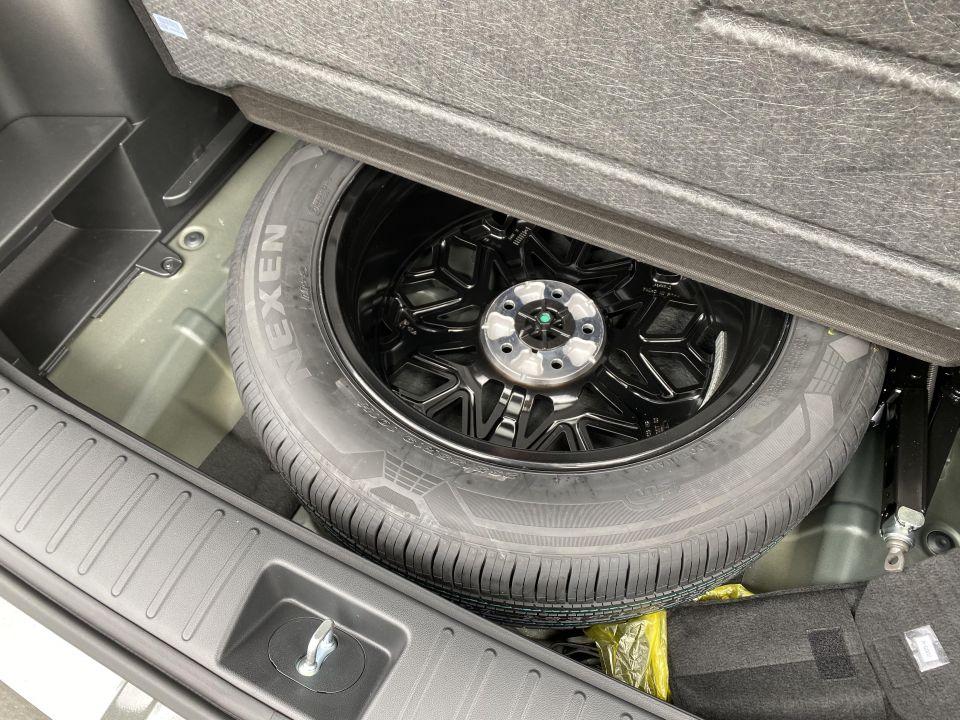
The car we tested here is a pre-production model and didn’t have the panoramic glass roof that will come fitted to the Highlander model. That could mean a little less headroom for adults in the second row.
In the second row you’ll find an armrest with two cup holders, cup holders in the doors, two USB ports and air vents. The back of the front seats also include map pockets.
We don’t have a final figure for cargo volume, but the European Tucson offers up to 620 litres of cargo space with the second row in place. The second row can be folded to create an almost flat floor.
Beneath the cargo floor is a full-sized alloy spare tyre.
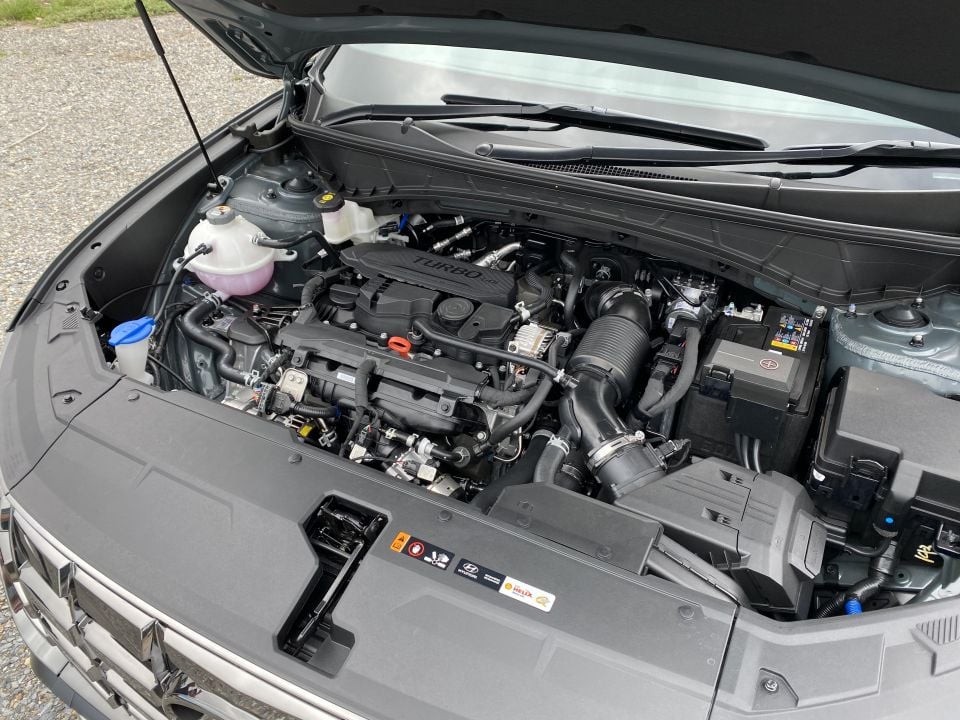
The Hyundai Tucson Highlander will be available with three engines in Australia.
They include a 2.0-litre naturally-aspirated four-cylinder petrol with front-wheel drive, a 1.6-litre turbocharged four-cylinder petrol with all-wheel drive, and a 2.0-litre turbocharged four-cylinder diesel with all-wheel drive.
For more details on the engines available, check out our 2021 Hyundai Tucson specification guide.
Fitted to our test car was the 1.6-litre four-cylinder turbocharged petrol engine producing 132kW of power and 265Nm of torque. It’s mated to a seven-speed dual-clutch automatic transmission.
Drive is sent through an on-demand all-wheel drive system that can shuffle torque between the front and rear axles. It’s always active, and varies torque split as required depending on throttle load and drive mode.
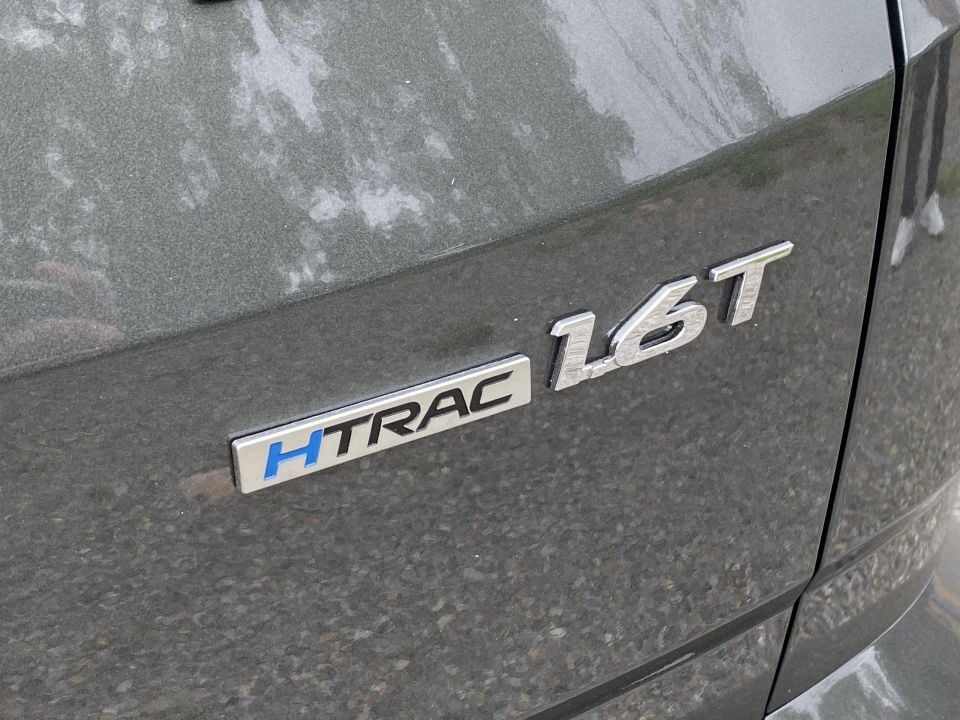
We don’t have exact details on the operation of HTrac system on the new Tucson, but we do know how it operated with the previous generation and it’s likely to be similar.
In Comfort it splits torque between the front and rear axle with a 70:30 ratio. In Smart mode that changes to predominantly sending torque to the front axle, while Sport mode can send up to 50 per cent of torque to the rear.
There’s also a centre-drive lock that will keep the drivetrain in a 50:50 torque split. It’s designed for light off-road use; in the previous Tucson it disabled from 30km/h up. It’s unclear whether it will work the same in the new Tucson.
We don’t have an official fuel economy claim from Hyundai for the new Tucson’s engine line-up, either.
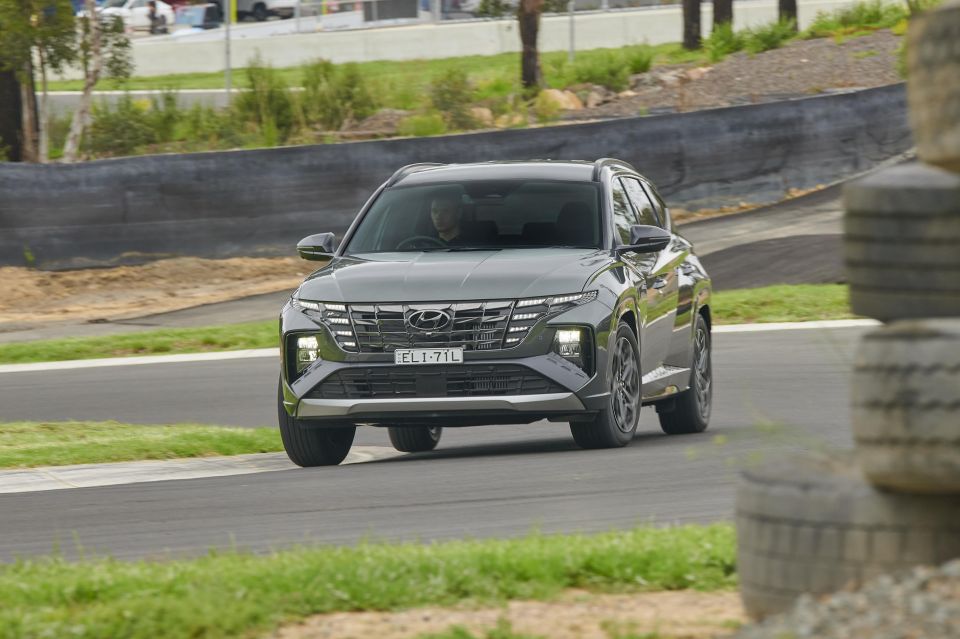
One of the first things that stood out to us with the new 1.6-litre Hyundai Tucson was how quiet it is inside the cabin. Hyundai has gone to great lengths to improve cabin ambience.
Hardly any engine noise can be heard in the cabin, even when you get stuck into the throttle. We’ll be keen to see if this also translates to the diesel, which offers a punchy 416Nm of torque.
At low speeds the dual-clutch transmission feels far better behaved than it did in the outgoing Tucson. The revisions make taking off on hills smoother and less jerky, while low-speed reversing up hills also feels smoother.
Our brief stint behind the wheel gave us an opportunity to try the Tucson on a private track that included some corners, a long uphill stretch, and a small gravel section.
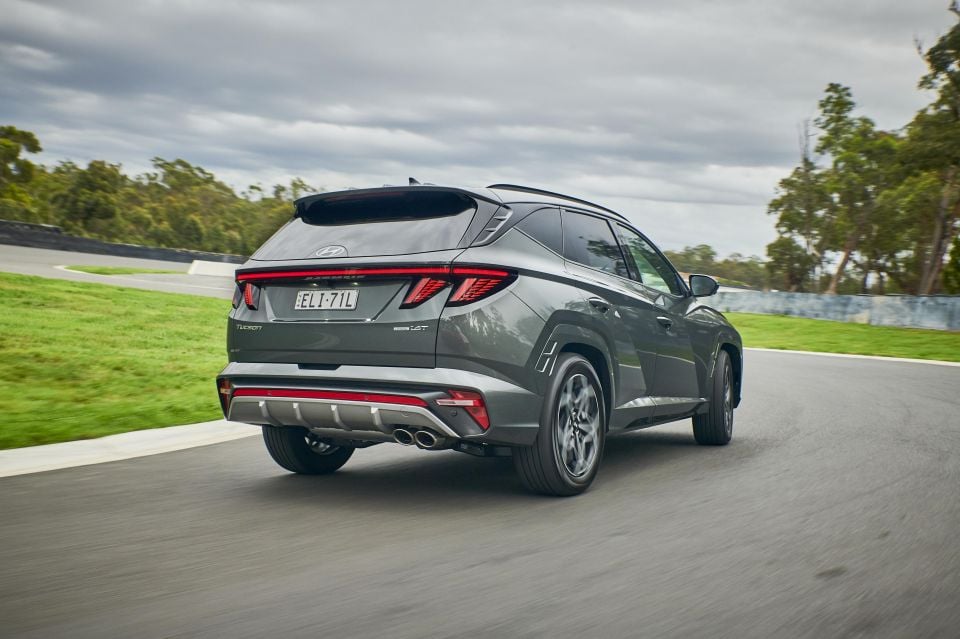
For the most part the 1.6-litre turbo petrol engine feels good. It’s not the quickest mid-sized SUV we’ve ever tested, but it works well with all-wheel drive.
On long uphill stretches you find the torque limits fairly early on and we suspect with a carload of passengers and luggage you may find it a little lacking. The extra wheelbase will mean extra weight, so if you’re after a country tourer that you want to load up and tow we’d go for the diesel.
The diesel features a regular eight-speed automatic with torque converter and also has over 400Nm of torque, along with all-wheel drive.
That’s not to say there’s anything wrong with the 1.6-litre – it’s punchy enough, it just doesn’t feel as strong as vehicles such as the Mazda CX-5 and Toyota RAV4.
On the handling front, Australian Tucson models are likely to have a unique suspension tune to cater for our conditions. European versions of the N Line will come with adaptive damping, but Australian versions will get a fixed-rate setup.

The vehicle we drove had a partial Australian tune. Our test track was incredibly smooth so it wasn’t a good place to judge the ride, but the tune did show handling competence.
The body stays fairly flat and feels confident when pushed through corners. The all-wheel drive system does an impressive job of handling torque distribution and there wasn’t really a point where we felt the torque would overcome the chassis.
Steering feel is excellent and it loads up nicely in Sport mode too.
Normally with Hyundai products we find the suspension tune is on the money. They’re on the sportier side of comfortable, but not overly so. The Tucson N Line felt the same – you could feel its sporty intentions, but it wasn’t over the top.
Again though, the road surface on test isn’t representative of a regular road surface. Tyre noise was minimal, but we’ll reserve judgement until we get the chance to drive it through our regular drive loop.
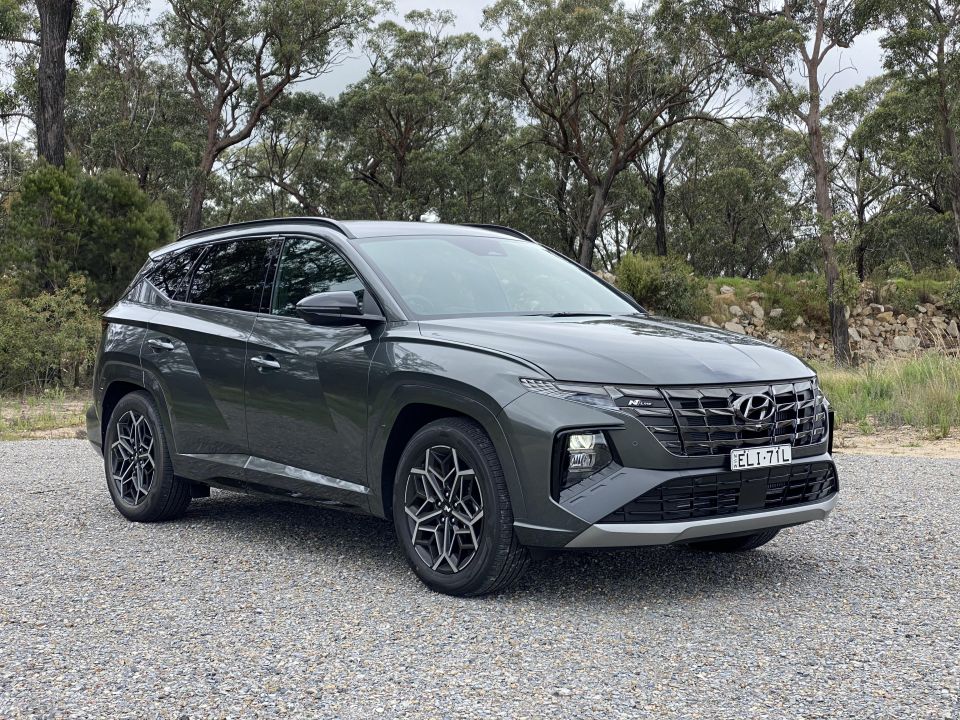
While it was only a short time behind the wheel of the new Hyundai Tucson, we like what we see. The interior feels premium, while the exterior has a level of class and sophistication not previously seen.
The 1.6-litre turbocharged petrol engine feels like it could do with a bit more poke, but we suspect the 2.0-litre diesel is going to be the pick of the range. On paper it looks like it’ll match the chassis the best and deliver the performance its looks deserve.
We also love that the N Line package will be available across the Tucson range. It means entry-level customers can get a sporty-looking Tucson without having to spend more money on a higher specification.
We will have a chance to properly drive the new Tucson in the coming months, but for the moment this taster is a good sign of things to come.
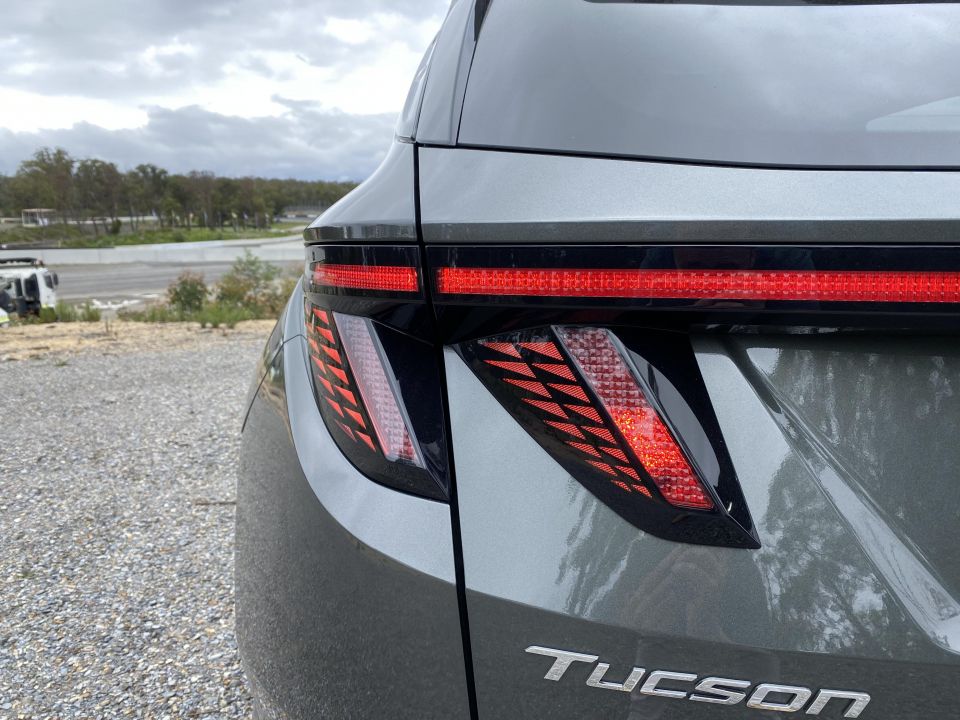
Where expert car reviews meet expert car buying – CarExpert gives you trusted advice, personalised service and real savings on your next new car.
Click the images for the full gallery
Where expert car reviews meet expert car buying – CarExpert gives you trusted advice, personalised service and real savings on your next new car.
Paul Maric is a CarExpert co-founder and YouTube host, combining engineering expertise with two decades in automotive journalism.


William Stopford
18 Hours Ago


Matt Campbell
1 Day Ago


William Stopford
2 Days Ago


Josh Nevett
4 Days Ago


CarExpert.com.au
5 Days Ago


Josh Nevett
6 Days Ago